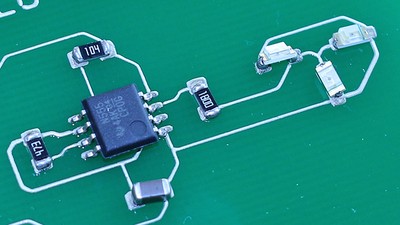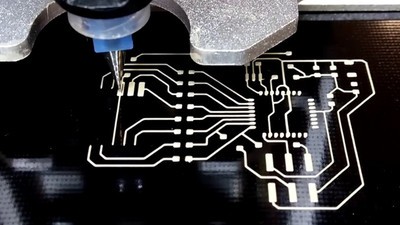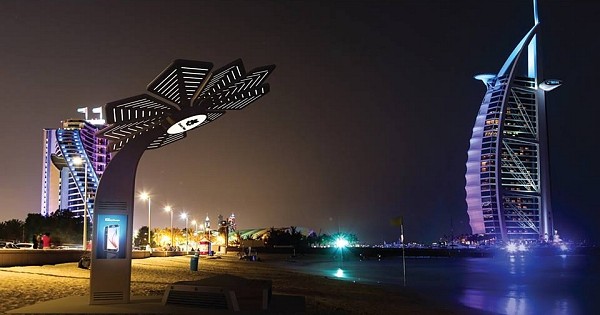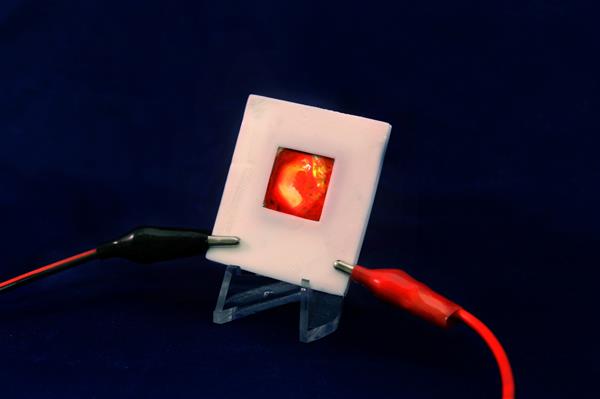Electrifying Ideas with 3D Printing
Posted By Jess Hedstrom on Dec 8, 2015 | 0 comments
For decades electronic items have been reshaping the landscape of our personal and professional lives, it’s as true today as it was in the 1980’s when the first ULSI-PCB and 3D Printer were invented. As our need for eco-friendly cost efficient manufacturing options raises it is essential to discover how the electronics industry is being disrupted by 3D printing technology.
Electronic engineering has been around since the early 1900’s in one form or another, but we’re going to begin in the year 1984; this is the year in which the first 3D Printer and the first “ULSI” circuit board were created. The acronym ULSI stands for ultra-large-scale integration, and in terms of circuitry it’s the largest integration that there is; take a look at the graph below and you will see that the ULSI circuit boards have the maximum amount of transistors and logic gates. In the past manufacturing circuit boards required many steps that were typically completed using several tools, including (but not limited to): soldering irons, and solder, needle nose plyers, wire cutters, clamps & multimeters. The chemicals used to create the copper paths paths on circuit boards are very dangerous and harmful for the environment. There are over 25 items needed to create one ULSI board which include tools, machines, and chemicals; after the boards are created the assembly process begins. In this process a lot of time and money are lost, and as we discover more about how 3D printing is disrupting the electronics industry we’ll share how it is helping to save electronic engineers time and money.
1984 is the very same year SLA 3D printing was created; the printer was huge and printing with this technology required lots of ventilation as the fumes were very unhealthy for breathing. The fumes were very toxic and in the beginning if you were exposed to the fumes for long periods without the proper ventilation you could permanently damage your lungs. As the decades passed the technology progressed for both circuit boards and 3D printers they became smaller and safer for the user and the environment; just this year 2015, 30+ years from the birth of SLA and ULSI technology, we were introduced to the market’s first desktop 3D printer that can create multi-level circuit boards.
3D printing and circuitry work together today to improve our electronics and our environment
Thanks to the evolution of 3D printing and circuitry, product designers and electronic engineers can now create products in which the circuit board is already integrated into the enclosure. Removing the need for assembly time, harsh chemicals and machining/tooling equipment. Let’s discover how this works.
Multi-level circuit boards were a very laborious task to create, imagine the process of making one circuit board and layering another completed circuit board on top, like a circuit board sandwich. As you can see the assembly process is longer and there is a necessary need for more iterations and for testing the component, you’d also want to be sure that the boards can fit into the enclosure. This year, Nano Dimension released their DragonFly 3D printer which has the capability to create multi-layer circuit boards within an enclosure. Let’s take a closer look at it.
The rapid prototyping capabilities of the DragonFly 2020 3D printer for professional electronics revamps the ways electronic product development teams work. It means no more days or weeks waiting for a custom PCB (printed circuit board) prototype that has to be sent offsite to be made. The DragonFly 2020 offers the flexibility to print just part of a circuit, or the entire board, so that testing and iterating on the fly are easy. The result is greater progress, improved innovation, fewer development risks, faster time-to-market and ultimately, better products. The Nano Dimension DragonFly 2020 PCB printer is a highly accurate and versatile inkjet deposition system for printing professional multi-layer circuit boards. The innovative hardware, dedicated nano-inks and novel software bring new possibilities to a wide range of research and development, prototyping and custom manufacturing projects.
The DragonFly printer was released in June of 2015 and since then it’s been a rousing success. The market will determine how this technology will be used. This is much different than in 1984 when the only people who could create boards were those with the tools, machines and space to safely build. Today there are several printers on the market that can create multi-layered PCB’s, however I’d like to call your attention to just one more, it’s called Voltera V-One. This printer can save time and money by printing circuit boards right from your desk. The user can import their Gerber file into Voltera’s software, place a blank board on the print bed, and press print! This will allow the user to create faster iterations that will allow them to go to market quicker. Creating a two layer circuit board with this printer is an option as well, the V-One’s software will automatically convert vias in your design to bridges and will sandwich a layer of insulating ink between layers of conductive inks to create 2-layer boards. This is the first desktop multi-layered PCB 3D printer on the market, and it’s ability to save time and money are of great benefit to many electronic engineers. The tools required are drastically reduced and the wait time is a fraction of the traditional manufacturing time, and the additive technology reduces waste and the use of harsh chemicals. There are several printers on the market that are testing and experimenting with this technology however I wanted to point these two our because they are paving the way in terms of what can now be completed with 3D Printing and Circuitry.
If you are interested in time & saving money by choosing an efficient and eco-friendly form of manufacturing for your electronics please click here and you will be taken to Sculpteo’s site where we can help you find the right product and material for you.
Electronics and 3D printing team up to provide Wifi and Solar Power
As the population in Dubai has increased, so has the energy consumption and pollution; Dubai has created a plan to become the most energy efficient and “green” country on the map by 2050, and only one element of this plan is a product called the Smart Palm. Smart Palm is a green self-sustainable device recharge station and info point with complimentary Wi-Fi access, and those are only 2 of it’s features. It also has a camera installed for security and protection purposes, it features seating areas located around the smart palm to relax while utilizing the services of the Smart Palm, there’s a screen with news updates and important governmental notices and advertisements, touch screen that will provide weather updates, and Solar Panels so that it’s completely powered by clean energy.
There are currently only a few operational Smart Palms in Dubai, and they were received with pleasure; in the coming years there will be more versions of Smart Palm the current version took ten months from conception to completion. The 20-foot-tall trees are made from concrete and 3D printed, fiber-reinforced plastic with added ultraviolet and humidity protection, and as we turn our attention to the future the founder Viktor Neleta had this to say: “Subsequent Smart Palms will have ATM machines and utility bill payment services; our team has also started to find new ways in which the Smart Palm can support other forms of sustainable generation, specifically through air and water purification modules.”
Let us now turn our attention to the future to examine the ways that 3D printing is disrupting electronics
The future is bright with 3D printed organic LED lighting
Recently a patent was requested for a new 3D Printer this month and what makes this patent particularly notable is that it was filed by a company called Graphene 3D. Only 1 year ago this company came up with a series of conductive materials called graphene-based nanocomposites and their most recent patent is for a 3D printer called the Romulus III, which could be one of the most advanced, multi-functional 3D printers available on the market. The patent will also cover a unique process for 3D printing an organic LED light source with the Romulus III that immediately functions when printed. This means that at the press of a button you can create a fully functioning light source without the need for any assembly or soldering. “A primary mission of our company is to revolutionize 3D printing by making it capable of easily fabricating functional objects, things that work and can be used. Incredibly, we have developed the technology of 3D printing a light source ‘from scratch’, with one touch of a button,” said Daniel Stolyarov, the other Co-CEO. “Our main focus is developing specialized 3D printing techniques and materials that push past the boundaries of what is currently available.”
Although the technology mentioned in this article is (for the most part) currently available, if you do not have access to the printers mentioned above, don’t worry. Sculpteo can provide prototypes of your PCB or enclosure with no problems. Just upload your 3D model today to begin the process. If you’d like to learn more about 3D printing for electronics just click here.


 Connect with Google
Connect with Google Connect with Facebook
Connect with Facebook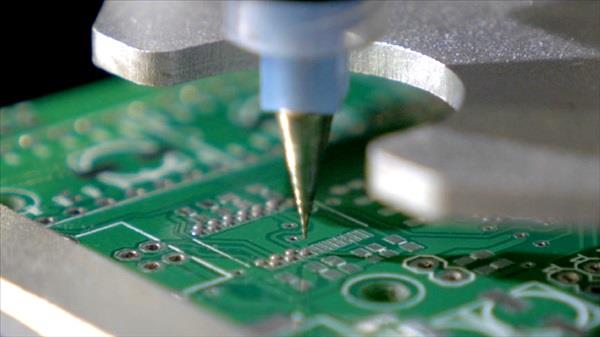

![Front_View_4_placing[1]](/blog/wp-content/uploads/2015/12/Front_View_4_placing1.jpg)
